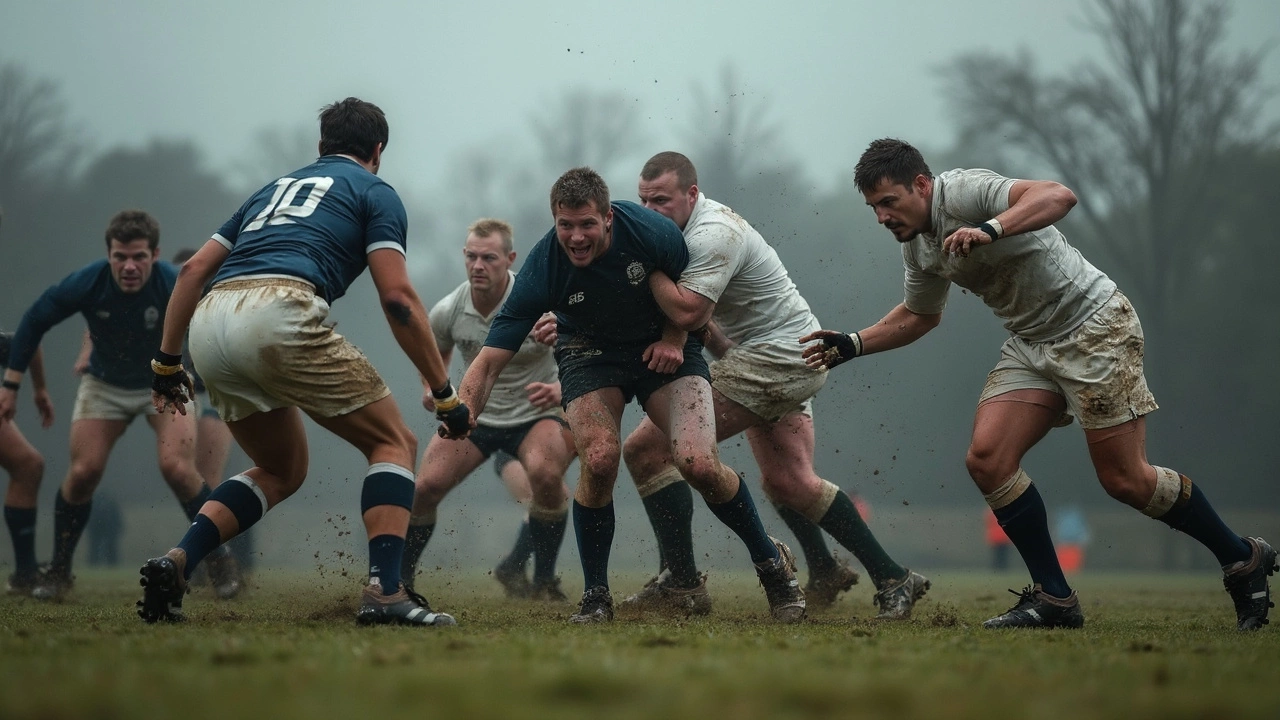Rugby Turnovers – What They Are and Why They Matter
When talking about rugby turnovers, the moment a team loses the ball to the opposition during open play. Also known as ball changeovers, they can swing momentum in seconds and are a focal point for every referee, the official who enforces the laws and signals when a turnover occurs. Understanding the mechanics helps players keep hold of the ball and helps officials apply the laws consistently.
In rugby, possession, the right to control the ball is the most valuable commodity. A turnover instantly transfers that commodity, often creating scoring opportunities or defensive pressure. The way a turnover happens—whether through a tackle, a knock‑on, or a forward pass—determines which rule the referee must apply. For example, a tackle leading to a ball strip triggers the law on grounding the ball, while a forward pass results in a scrum. Knowing these nuances lets players anticipate the referee’s call and adjust their tactics on the fly.
Key Aspects of Rugby Turnovers
There are three main types of turnovers you’ll see on the field. First, the forced turnover, where a defender legally strips the ball during a tackle. Second, the error turnover, such as a knock‑on or forward pass, which is an unintentional loss of possession. Third, the penalty turnover, where a foul by the attacking team hands the ball to the defence via a penalty kick or scrum. Each type influences game strategy, the plan a team uses to attack or defend after a turnover differently. Coaches may program specific drills to minimize error turnovers while encouraging defenders to practice strip techniques safely.
Referees play a crucial role in identifying which type of turnover has occurred. They watch the tackle area, the ball’s trajectory, and the players’ positions. A quick, accurate call can keep the game flowing; a missed call can lead to confusion and an unfair advantage. For officials, mastering the visual cues—like the ball’s spin after a tackle or the stance of the attacker—makes spotting turnovers second nature. Ongoing training and video analysis are standard tools for referees to sharpen these skills.
From a player’s perspective, turning over the ball is often a result of poor technique or fatigue. Simple habits like keeping the ball low, supporting the ball carrier, and maintaining a strong line can dramatically reduce error turnovers. Conversely, defenders who work on timing their tackles and positioning themselves to contest the ball increase their chances of a forced turnover. The interplay between these habits and the referee’s enforcement creates a dynamic where both sides constantly adapt.
In practice sessions, teams usually dedicate a portion of training to turnover scenarios. Drills might involve a series of tacklers attempting to strip the ball or a set-piece where the attacking side must avoid forward passes under pressure. Watching match footage also helps players see how professional sides exploit turnovers to shift momentum. Coaches often point out the exact moment the referee blew the whistle, linking the rule to the on‑field outcome.
All this information sets the stage for the articles below, where you’ll find deeper dives into specific turnover rules, referee perspectives on common mistakes, and tactical advice for both attackers and defenders. Whether you’re a player looking to keep possession, a coach shaping your game plan, or a referee polishing your decision‑making, the collection ahead offers practical insights you can put to work right away.
Jackaling in Rugby: The Art and Strategy of Winning Turnovers
Get the full scoop on the 'jackal' in rugby. Learn not just what it means but why it’s key, how it works, and tips for pulling it off—whether you play, coach, or just watch.





